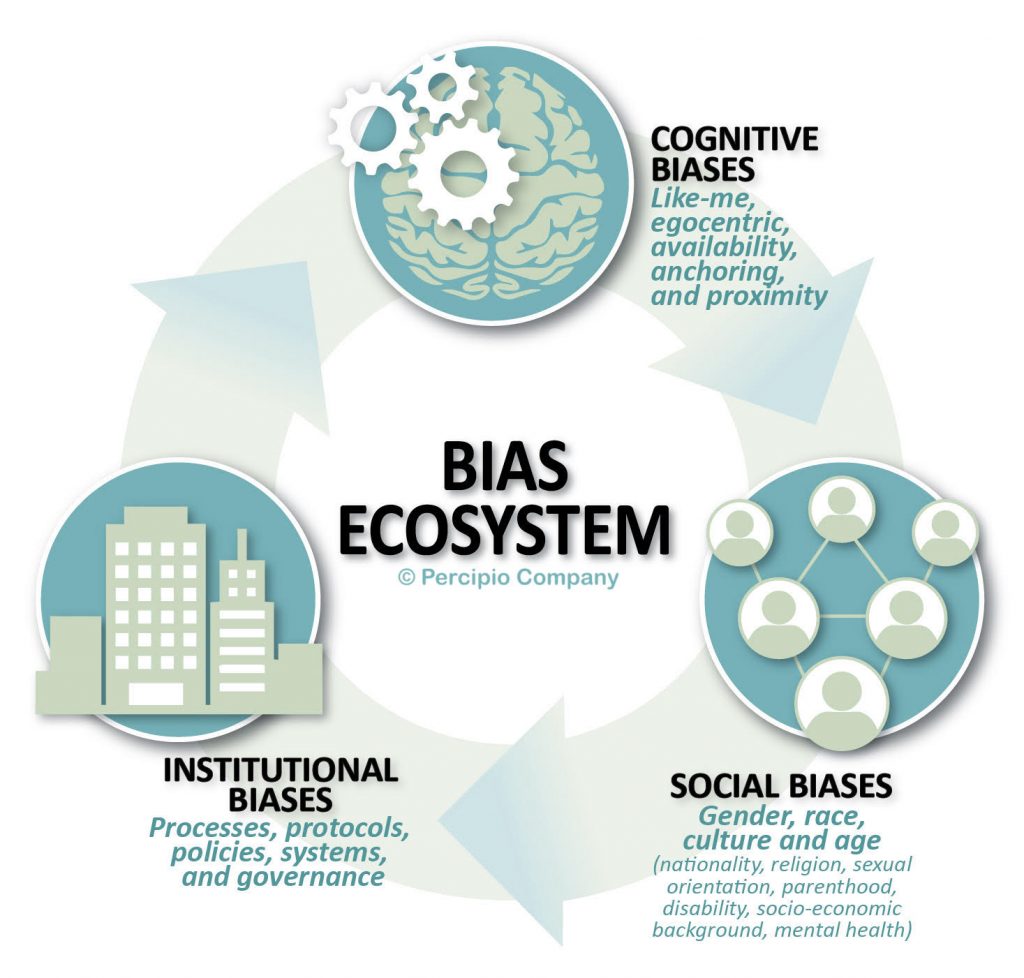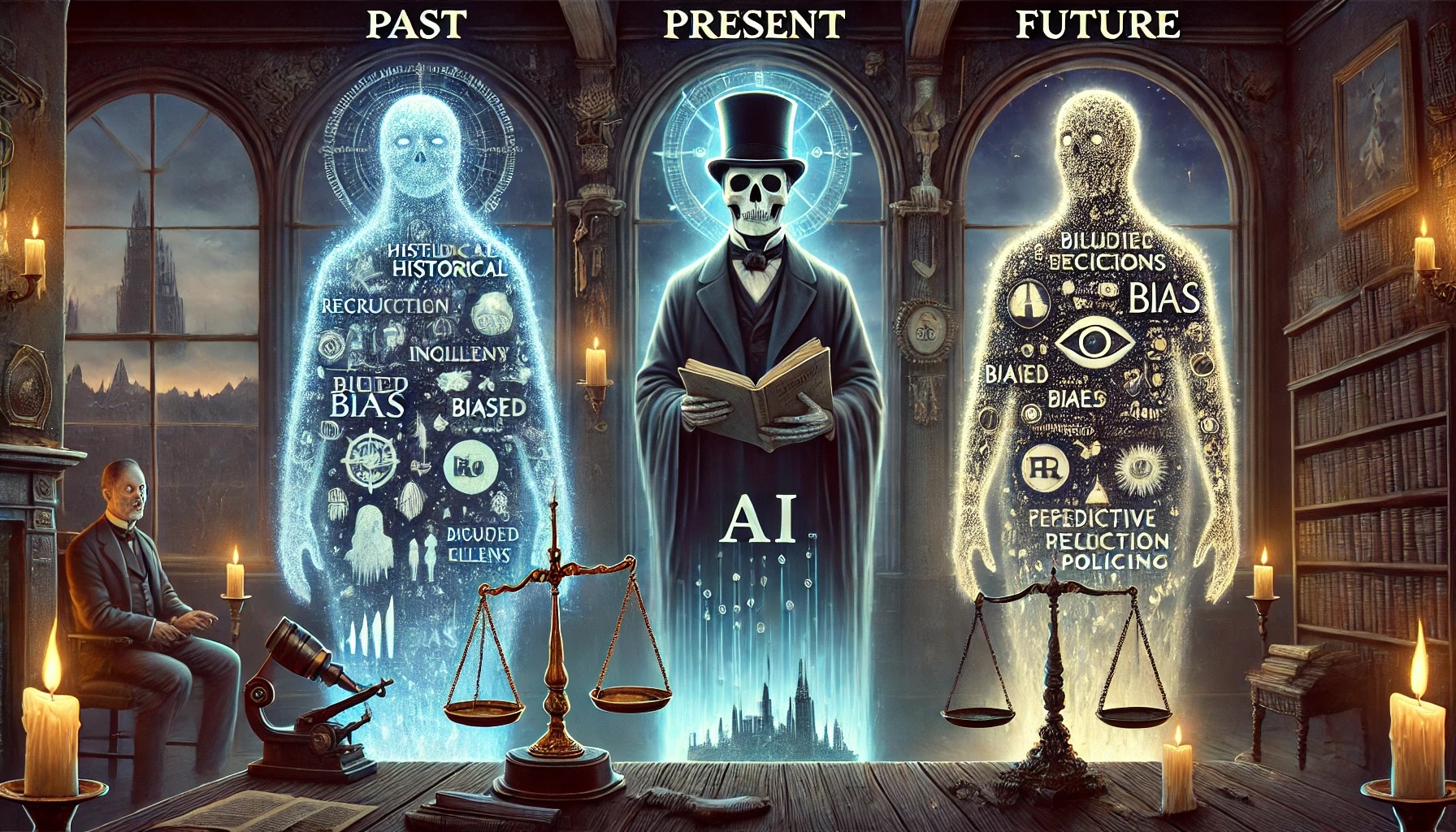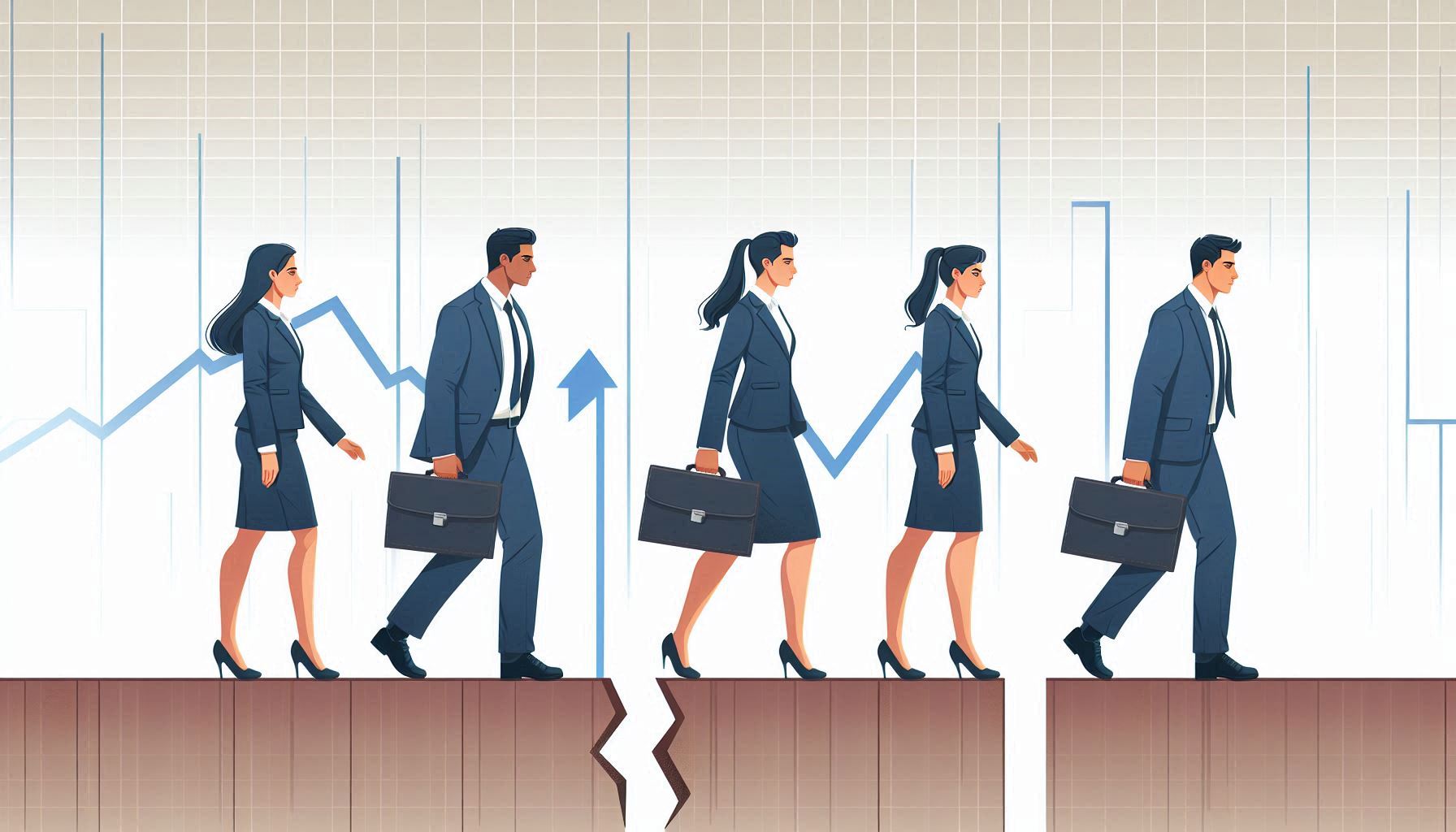Continue reading or listen to the article read by Ed Calder.
You’re here because you are interested in bias and how it impacts your organization, how it is showing up in interactions, policies, and decision-making, and how it is blocking innovation and growth. Leading that conversation yourself might feel overwhelming, maybe even contentious. It might get uncomfortable to talk about bias. Some may get defensive. Your mind may begin to seek justifications for avoidance. Our brains are very good at serving up reasons to postpone or punt tough conversations allowing us to remain complicit in silence.
Understanding Workplace Bias
But taking an in-depth look at bias has tremendous upside. Doing this work holds the promise of creative freedom, better products, greater employee retention, increased talent, happier clients, and a sharper competitive edge. Equally as important, this work allows you to develop a stronger understanding of yourself and of each other. This is work worth doing.
The first step in moving your organization from a safe space to a brave space is to set agreements for engagement intentionally. Listening deeply to all stakeholders and valuing multiple experiences, insights, and dimensions of diversity. Establish an unwavering environment of respect, dignity, and integrity for everyone. Every level. Every role. Every identity. Agree upon a common language that will frame constructive conversations.

An ecosystem is a system, or a group of interconnected elements, formed by the interaction of a community of organisms with their environment. A Bias Ecosystem is one where the elements are various types of bias that interact with one another and shape our environments. Bias is embedded in our thoughts, our actions, our relationships and our social fabric. Bias is nuanced. Bias is differentiated. Bias is also an incredibly useful construct to create space for deeper conversations. It can form a common language that empowers people to have difficult but meaningful discussions with one another. Looking critically at biases at all of these levels, and doing so collectively, creates a foundation that fosters both the values and the outcomes you want in your workplace.
Three Categories of Bias
People perennially navigate three categories of bias: cognitive, social and institutional. Each category interacts with and reinforces the other. Cognitive biases determine thoughts and in turn impact decisions. Although many cognitive biases operate outside of conscious decision-making, understanding what these biases are and how they manifest can allow people to be more aware. Once each person understands their predilection for these biases and which ones they most often perpetuate, they can make behavior and relational changes–altering routines at work, meeting structures, or how to best engage with others in the workplace.
Cognitive Bias To Social Bias
From cognitive biases we look at social biases and in particular gender, race, age, and culture with all the multi-layered intersections between them. While these aren’t the only social biases, they are the most common and they impact every business. We start with identity work, exploring the dimensions of diversity, how people see themselves and how they are seen by others. We move diversity beyond a binary concept and recognize diversity as the multi-faceted, multiple stories that each person contains. Everyone is more than a single snapshot or a single story. We work collectively to understand the entirety of people’s identities that show up in their work environments. We measure the impact of social biases through behaviors not thoughts.
It’s through these behaviors–or what people do when they are not thinking about it– that “culture” in the workplace is cultivated.
For example, an inclusive workplace may spend the first ten minutes of every meeting checking in. Maybe your workplace has a culture of acknowledging life events in a particular way. Probably most of your work culture has been deeply impacted by the increase in virtual environments. Pre-pandemic, many organizations relied heavily on the accidental interactions between staff to create work culture–going to lunch, greeting each other in the morning, and other informal but habitual ways of establishing connection. In our current virtual universe, people must think about all interactions more intentionally and build concrete ways to strengthen relationships.
Institutional Bias
The third category in the ecosystem are the institutional biases, or the processes, policies and systems that, over time, are constructed from social and cognitive biases. These formal and informal structures can include hiring and recruiting practices, onboarding, evaluation, and promotion. Institutional biases impact how your company hires, recruits, on-boards, evaluates, and promotes staff. A new hire can often immediately see what biases are part of the company culture and adapt accordingly, for better or worse. Your company’s institutional biases influence how people navigate the workplace and demonstrate what is and isn’t valued by the company. These institutional biases are often evident to anyone who enters an organization. A new hire can immediately tell what biases have become policy. These biases will determine how people navigate the workplace, what they will value and what is not valued.
Businesses that use this bias ecosystem are more intentional in developing inclusive behaviors that foster creativity, communication, retention, high performance, and a culture of belonging. They build off the belief that cognitive biases are natural and are a characteristic of how our brains function. They mitigate against fear and defensiveness by recognizing that most people have an innate curiosity about how their brains work. From this place of curiosity, they explore how cognitive, social and institutional biases are manifesting in their work relationships and corporate structures. As one client explains, “People need to feel comfortable enough to ask the hard questions and just as uncomfortable enough to know that the answers are going to cause them to re-think their own capabilities and look to how they can change and grow.”
How Do You Navigate Through Workplace Bias?
The Percipio Company customizes each client engagement to include management consulting, executive coaching, workshops, or other combinations to move your organization from bias to belonging™. One particularly effective forum is the “Executive Roundtable Discussions,” where we create a space for company leaders to be self-reflective and to see how bias has impacted their own identity, relationships, and collective decisions. This self-discovery and self-exploration process allows people to take time to explore their identities and be a bit more vulnerable than is typical at the office. This foundation of exploration will bring to light the practices that need to surface so that you, as a community, can decide whether they are serving your organization or whether and how they need to change.
We recognize that taking on the challenge of addressing the Bias Ecosystem is not easy work. But we are with you throughout the entire process, navigating you through the exploration, assessment, and implementation, supporting you where you feel resistance or get stuck. A key takeaway is that executives see themselves in the work, not apart from it. Once you’ve gained an understanding of the bias ecosystem, you can begin to disrupt the biases that have become baked into your organization’s processes. You’ll deliver the results of a more inclusive organization with increasing revenues, exceptional employee performance, and more satisfied customers. Let the work begin. Take the Bias Assessment now!

Percipio Company is led by Matthew Cahill. His deep expertise in cognitive, social, and workplace biases is rooted in the belief that if you have a brain, you have bias®. He works with executives to reduce mental mistakes, strengthen workplace relationships & disrupt existing bias within current HR processes, meeting protocols and corporate policies. Matthew has demonstrated success with large clients like LinkedIn, Salesforce and dozens of small to mid-size companies looking to create more inclusive workplaces, work smarter, generate more revenue and move from bias to belonging®.





